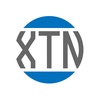In the midst of a public health crisis defined by the rampant misuse of opioids, the role of Health Information Technology (Health IT) in combating this epidemic is more critical than ever. This article delves into how advanced IT tools are reshaping the landscape of prescription monitoring, offering a beacon of hope in the fight against opioid abuse.
The Opioid Crisis: A Brief Overview
Opioids, a class of drugs known for their pain-relieving properties, have become a double-edged sword. Their overprescription and misuse have led to a crisis of addiction and overdose deaths. The statistics are alarming, with the Centers for Disease Control and Prevention (CDC) reporting tens of thousands of opioid-related overdose deaths annually in the United States alone. The crisis transcends geographical and socio-economic boundaries, impacting communities nationwide.
The Promise of Health IT in Addressing the Crisis
Health IT has emerged as a key player in addressing the opioid epidemic. By leveraging electronic health records (EHRs), prescription drug monitoring programs (PDMPs), and data analytics, healthcare providers can make more informed decisions, track prescription patterns, and identify patients at risk of abuse or overdose.
Electronic Health Records (EHRs): A Digital Revolution in Patient Care
EHRs are at the forefront of this technological intervention. They provide a comprehensive view of a patient's medical history, including past and current prescriptions. This visibility enables healthcare providers to spot potential red flags, such as a history of opioid prescriptions from multiple doctors. EHRs also facilitate better coordination among healthcare providers, ensuring a unified approach to patient care and prescription management.
Prescription Drug Monitoring Programs (PDMPs): Tracking and Analysis
PDMPs are state-run databases that track the dispensing of controlled substances, including opioids. They are a vital tool for clinicians, pharmacists, and regulatory bodies. By accessing a patient's prescription history through a PDMP, a provider can make better-informed decisions about prescribing opioids, potentially preventing overprescription and doctor shopping.
Data Analytics: Uncovering Trends and Predictive Insights
Data analytics, powered by sophisticated algorithms and artificial intelligence, offer a deeper dive into prescription trends and patient behaviors. By analyzing vast amounts of data, these tools can identify patterns indicative of misuse or diversion of opioids. Predictive analytics can also flag individuals who may be at higher risk of developing an opioid use disorder, enabling early intervention.
Integrating Health IT into Clinical Practice: Challenges and Solutions
While the potential of Health IT is immense, its integration into everyday clinical practice faces challenges. Issues such as data privacy, interoperability between different Health IT systems, and the need for provider training are significant hurdles. Addressing these challenges requires a concerted effort from healthcare providers, IT professionals, and policymakers.
Data Privacy and Security: Safeguarding Patient Information
Ensuring the privacy and security of patient data in Health IT systems is paramount. With the rise of cyber threats, robust security measures are essential to protect sensitive health information from unauthorized access or breaches.
Interoperability: The Key to Unified Health Data
Interoperability, the ability of different Health IT systems to communicate and exchange data effectively, is crucial for the seamless functioning of EHRs and PDMPs. Efforts to standardize data formats and protocols are ongoing, aiming to create a unified system that healthcare providers nationwide can rely on.
Training and Education: Empowering Healthcare Professionals
For Health IT tools to be effectively used in combating the opioid crisis, healthcare professionals need to be well-versed in their functionalities. Ongoing training and education programs are vital to equip providers with the skills and knowledge to leverage these technologies fully.
The Road Ahead: A Collaborative Effort
The fight against the opioid crisis is a complex and ongoing battle. Health IT provides powerful tools, but their success hinges on collaboration among healthcare providers, IT experts, policymakers, and patients. Continuous innovation, policy support, and education are key to harnessing the full potential of Health IT in prescription monitoring.
Conclusion
In the landscape of healthcare technology, where the focus often tilts heavily towards technical sophistication, Holon Solutions emerges as a harmonious blend of innovation and humanity. This company's conclusion to the broader narrative of health IT, particularly in addressing pressing issues like the opioid crisis, is not just a technological triumph but a revival of the human element in healthcare.
Holon, inspired by the concept of a "holon" symbolizing unity and interdependence, aptly reflects this philosophy in its approach to healthcare technology. By prioritizing the enhancement of human connections through advanced technology, Holon stands out in an industry often criticized for depersonalizing patient care. This unique approach demonstrates that while technology is a powerful tool, the essence of healthcare remains rooted in human interaction and empathy.
The platform developed by Holon transcends conventional offerings in the healthcare technology field. It's not merely a product; it's a solution designed to simplify complex healthcare processes. The use of proprietary sensor technology to aggregate patient data from diverse sources is a game-changer. By integrating this data seamlessly into individualized clinical workflows, Holon directly addresses one of the most significant challenges in modern healthcare: the burden of administrative tasks. This strategic automation not only saves time but also combats the prevalent issue of professional burnout, enabling medical practitioners to refocus on what truly matters - superior patient care.
In a competitive landscape brimming with technological solutions, Holon distinguishes itself by mitigating the overwhelming administrative tasks that healthcare professionals grapple with daily. The company's mastery of smart technology and intuitive design allows for the creation of customized tools and services that deliver tangible business returns and profoundly impact human interactions and outcomes. This dual focus is a testament to Holon's commitment to not just innovation, but also to the well-being of both healthcare providers and patients.
At the core of Holon's approach is the Holon Community, a network designed to optimize healthcare processes. This system streamlines the delivery of patient data from numerous sources to any care point, integrating effortlessly with existing infrastructures. This approach not only enhances professional fulfillment but also dedicates more time to patient-centric care, reinforcing the human aspect of healthcare.
Innovation is deeply embedded in Holon's ethos, particularly within its Innovation Lab. This space is a testament to the company's dedication to exploring limitless possibilities in technology and design, always with an eye towards emphasizing the human aspect of healthcare services. Holon's foundational principles – bold thinking, simplification, customer empathy, agile responses in a SaaS environment, and the humanization of every exchange – guide this exploration. This mindset is pivotal in accelerating the introduction of revolutionary solutions, mirroring Holon's commitment to transformative changes in healthcare.
In summary, Holon Solutions is not just pioneering in the field of healthcare technology; it's redefining it. The company's relentless pursuit to innovate healthcare experiences addresses key issues like professional burnout, reduces administrative strain, and enriches patient care. Holon stands as a beacon of hope in a world where technology and humanity are often seen as being at odds, steadfast in its vision to bring a more humane touch to healthcare innovation.


No comments yet